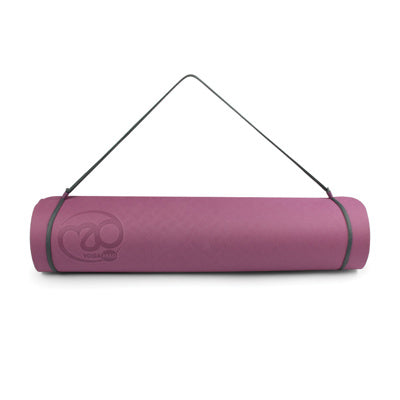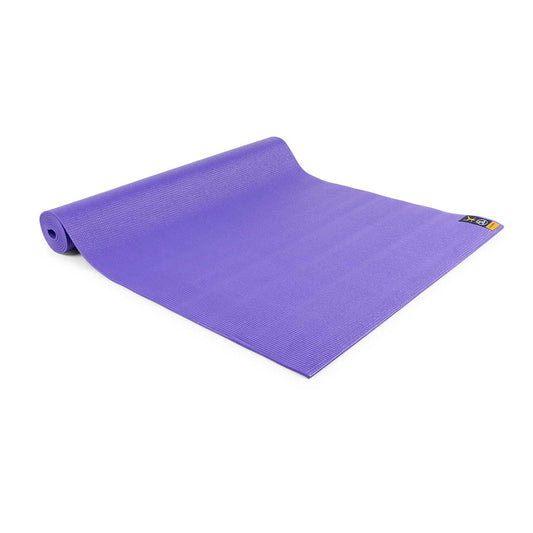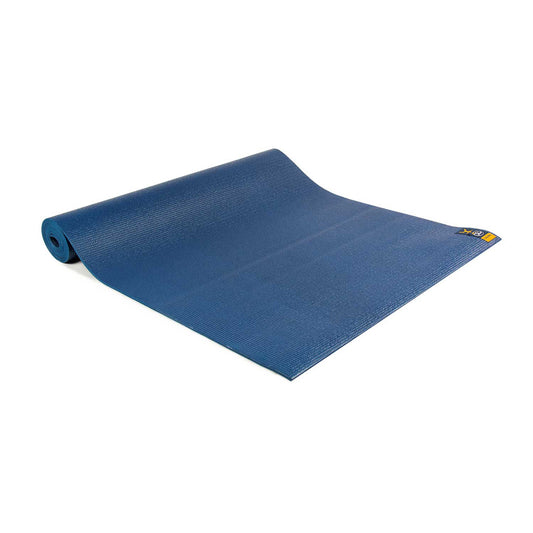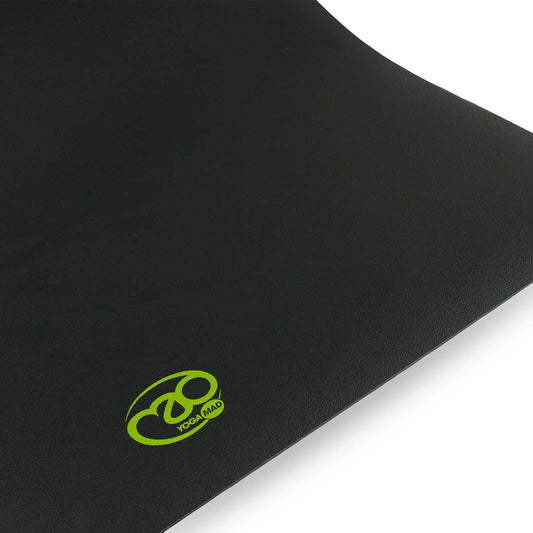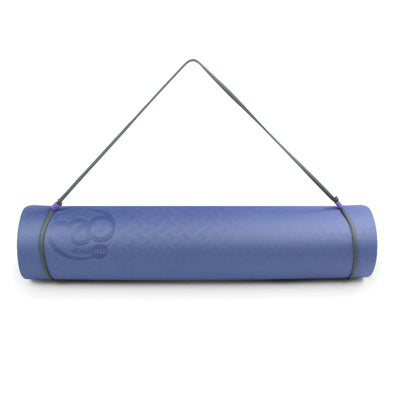Yoga mats are a must for any serious yogi, and if you practise a lot or attend different styles of yoga classes then you may even have multiple yoga mats.
As a general rule, a comfortable yoga mat for most practitioners will be approximately 4mm to 5mm thick, or 1/8 inch. For sitting and kneeling poses thicker mats may be preferred and for standing poses and travel mats as thin as 1mm can be popular.

FACTORS THAT CAN INFLUENCE HOW THICK THAT YOUR YOGA MAT SHOULD BE?
1. WHAT TYPE OF SURFACE WILL YOU PRACTISE ON?
For example if you intend to practise yoga on softer surfaces like cork or padded flooring, outdoors on the grass or on the beach then a thin yog mat may be the best option for you.
2. HOW OLD ARE YOU?
As a general rule, the more cushioning that we like to have around our joints, particularly when resting on your elbows or your knees. As you get older thicker mats with a little more cushioning are often preferred.
3. HOW FIT AND VIBRANT ARE YOUR JOINTS?
Some older people have more sensitive joints, but this isn’t always the case. If you have joint sensitivity then you will be likely to prefer a thicker mat.
4. WHICH STYLE OF YOGA WILL YOU PRACTISE?
The table below provides some guidance on just how thick that your yoga mat should be for the various styles of yoga available in Dublin -
| Yoga Mat Thickness
|
Advantages |
Disadvantages |
Best For |
|
extra thick - 6mm+
|
superb cushioning for the elbow, hips and knees during long poses
|
can be heavy to carry, hard to balance on and impede connection with the floor
|
Yin yoga and Restorative yoga |
|
thick - 6mm
|
only a little thicker than a standard mat at 4 to 5mm and will provide enhanced support and cushioning |
again you may be sacrificing some connection with the floor |
Ashtanga, Vinyasa and Yin
|
|
average - 4 to 5mm
|
the most optimium mat thickness for most styles of yoga provided that you don’t have overly sensitive joints
|
may be too thin for those with sensitive joints
|
most styles of yoga, particularly energetic and active styles that favour connection and grippiness.
|
|
Travel mats - 1 to 2 mm
|
light and thin, easy to fold, pack and carry. Perfect for a holiday or travel. Can be laid over a yoga blanket, a towel or a thicker yoga mat.
|
minimal cushioning. |
vacation, business travel or as a back up.
|
"Yoga teaches us to cure what need not be endured and endure what cannot be cured."
B.K.S. Iyengar
As a general rule, the best yoga mat thickness is one where you feel comfortable during your practice. Extra thick yoga mats (6mm+) are great for sensitive joints, but not for dynamic yoga practices. Thick yoga mats (6mm) are great to protect your joints. Average thickness mats (4-5mm) are the most commonly used.

WHAT ARE THICK YOGA MATS MADE FROM?
Most thicker yoga mats are made from the following materials –
WHAT ARE THIN YOGA MATS MADE FROM?
Thinner travel yoga mats tend to be made from rubber or latex.
YOGA MAT HACK FOR THIN YOGA MATS
When determining how thick a yoga mat should be, it is important to take into consideration the type of yoga practice that will be performed on the mat.
For instance, for a more vigorous practice such as Ashtanga or Power Yoga, a thicker mat may be more suitable due to the increased cushioning and stability that it provides. Thicker mats are also beneficial for those who have sensitive joints or difficulty balancing.
On the other hand, a thinner mat may be more suitable for those practicing seated yoga or restorative yoga, as it allows them to feel closer to the ground and gain better proprioception. In addition, some yogis prefer thinner mats because they are typically lighter and easier to carry around.
No matter what type of yoga is being practiced, it is important to find the right thickness for a yoga mat that provides enough cushioning and stability for the yogi’s body, yet does not create too much bulk or difficulty maneuvering.
It may be helpful to try out different mats in-person before making a purchase in order to determine which one best suits your needs and preferences.


